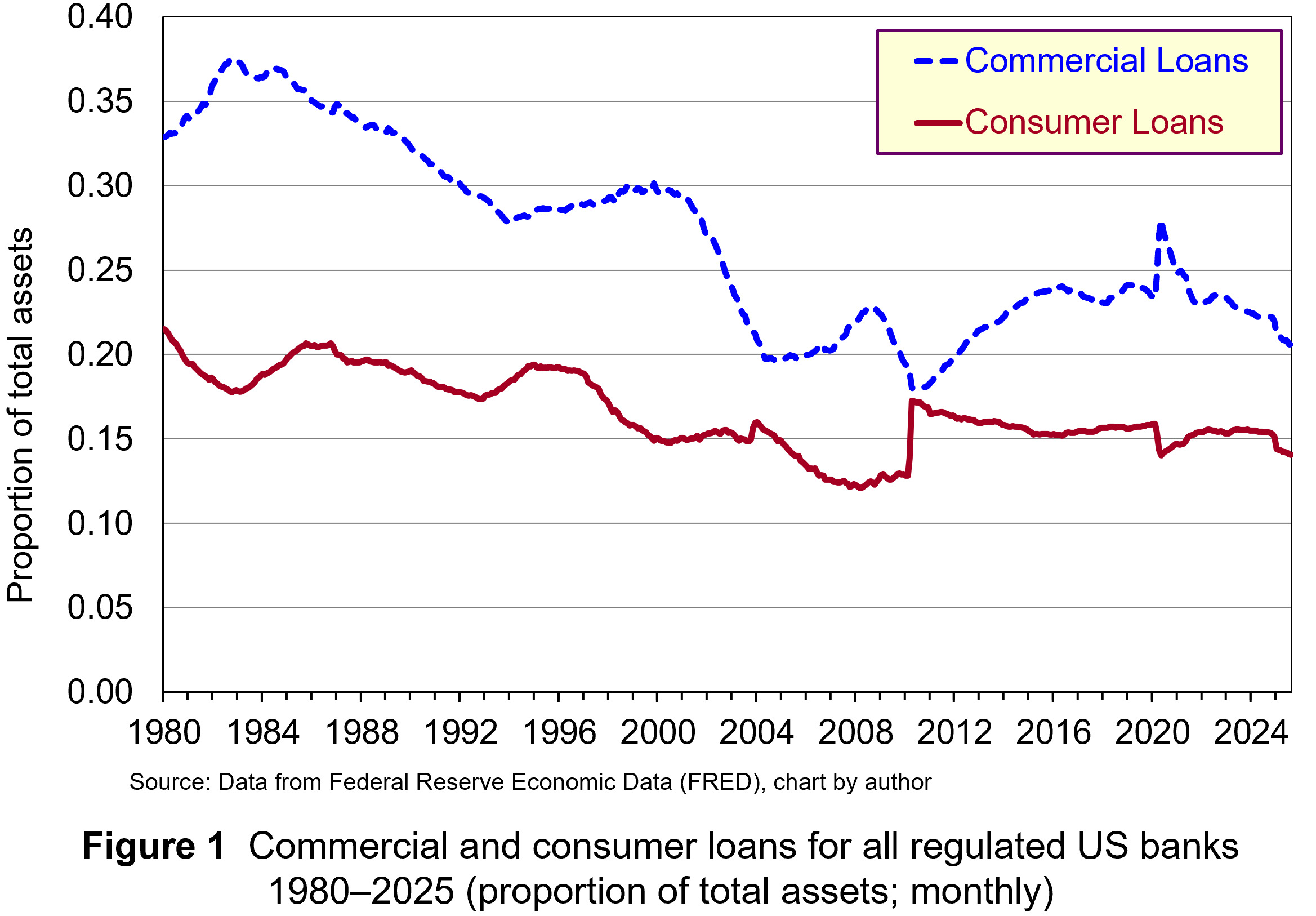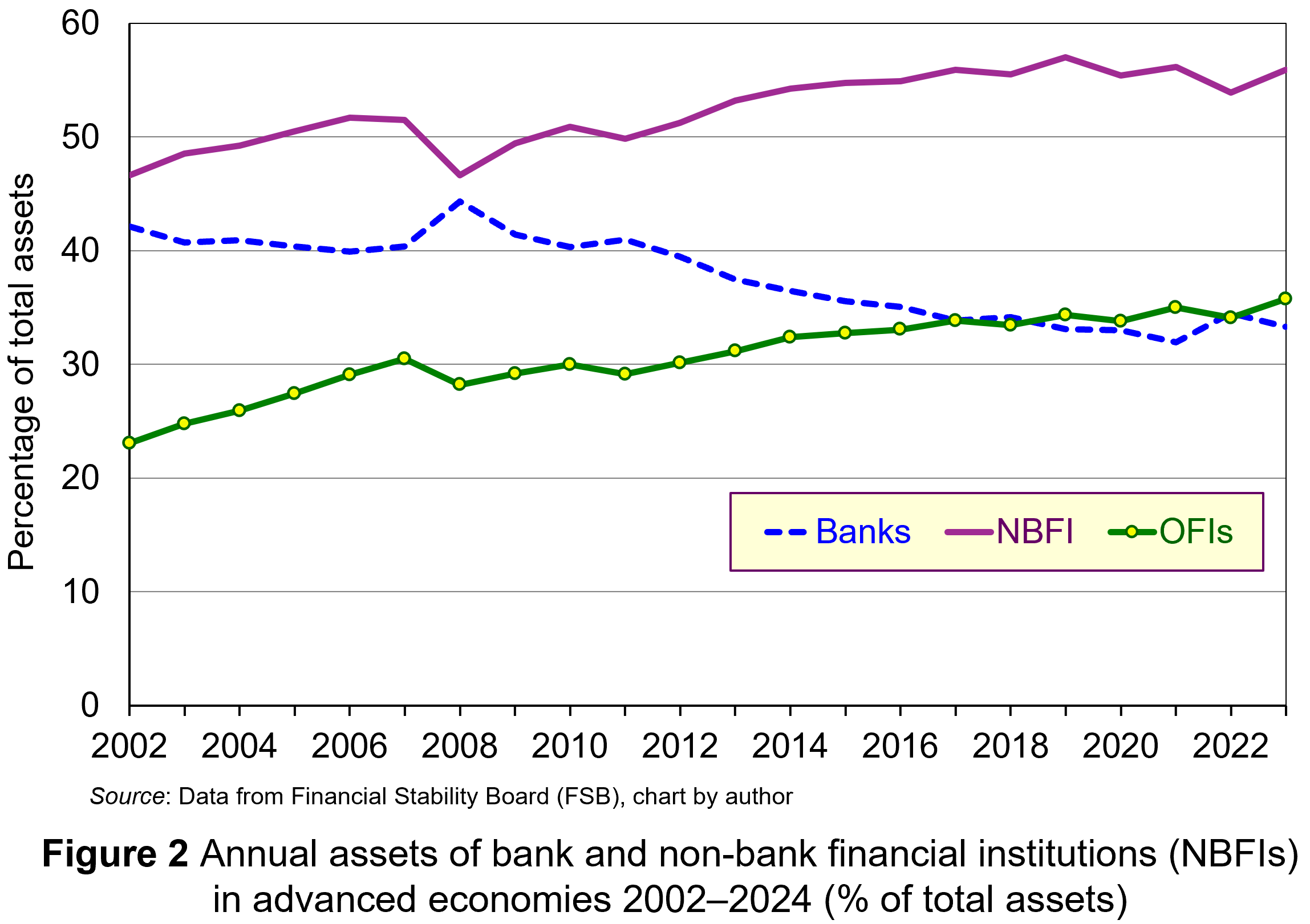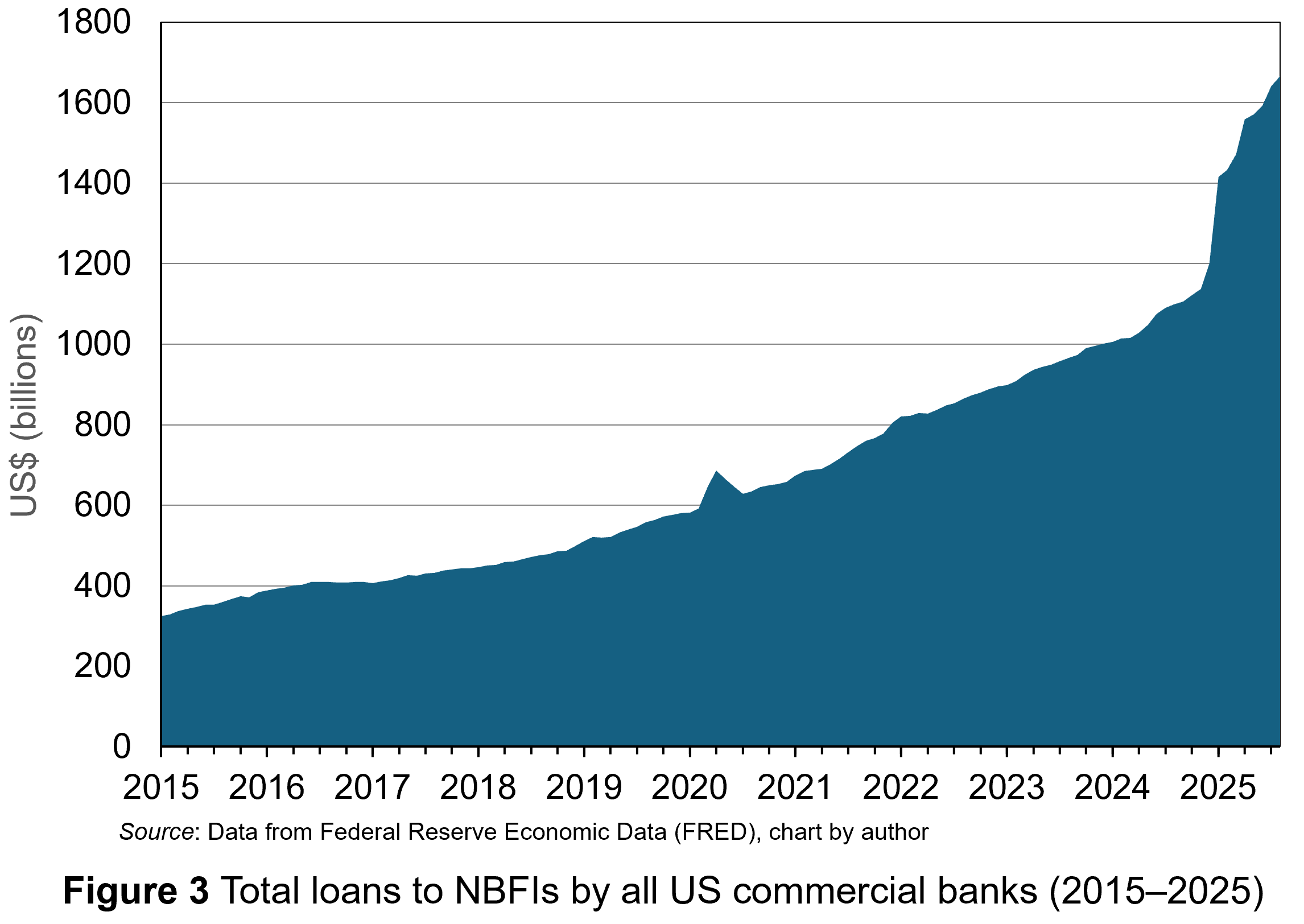 In my previous blog post on this site, I examined how AI-powered pricing tools can act as a ‘double-edged sword’: offering efficiency gains, while also creating opportunities for collusion. I referred to one of the early examples of this, which was the case involving Trod Ltd and GB Eye, where two online poster and frame sellers on Amazon used pricing algorithms to monitor and adjust their prices. However, in this instance there was also an explicit agreement between the firms. As some commentators put it, it was ‘old wine in new bottles‘, meaning a fairly conventional cartel that was simply facilitated through digital tools.
In my previous blog post on this site, I examined how AI-powered pricing tools can act as a ‘double-edged sword’: offering efficiency gains, while also creating opportunities for collusion. I referred to one of the early examples of this, which was the case involving Trod Ltd and GB Eye, where two online poster and frame sellers on Amazon used pricing algorithms to monitor and adjust their prices. However, in this instance there was also an explicit agreement between the firms. As some commentators put it, it was ‘old wine in new bottles‘, meaning a fairly conventional cartel that was simply facilitated through digital tools.
Since then, algorithms have increasingly become part of everyday life and are now embedded in routine business practice.
Some of the effects may have a positive effect on competition. For example, algorithms can help to lower barriers to entry. In some markets, incumbents benefit from long-standing experience, while new firms face significant learning costs and are at a disadvantage. By reducing these learning costs and supporting entry, algorithms could contribute to making collusion harder to sustain.
On the other hand, algorithms could increase the likelihood of collusion. For example, individual algorithms used by competing firms may respond to market conditions in predictable ways, making it easier for firms to collude tacitly over time.
Algorithms can also improve the ability of firms to monitor each other’s prices. This is particularly relevant for multi-product firms. Traditionally, we might expect these markets to be less prone to collusion because co-ordinating across many products is complex. AI can overcome this complexity. In the Sainsbury’s/Asda merger case, for example, the Competition and Markets Authority suggested that the main barrier to reaching and monitoring a pricing agreement was the complexity of pricing across such a wide range of products. However, the CMA also suggested that technological advances could increase its ability to do so in the future.
The ‘hub-and-spoke’ model
 One of the other growing concerns is the ability of AI pricing algorithms to facilitate collusion by acting as a ‘hub’ in a ‘hub-and-spoke’ arrangement. In this type of collusion, competing firms (the ‘spokes’) need not communicate directly with one another. Instead, the ‘hub’ helps them to co-ordinate their actions.
One of the other growing concerns is the ability of AI pricing algorithms to facilitate collusion by acting as a ‘hub’ in a ‘hub-and-spoke’ arrangement. In this type of collusion, competing firms (the ‘spokes’) need not communicate directly with one another. Instead, the ‘hub’ helps them to co-ordinate their actions.
While there have been only limited examples of an AI pricing algorithm acting as a hub in practice, what once seemed to be a largely theoretical concern has now become a live enforcement issue.
A very recent example is the RealPage case in the United States. The Department of Justice (DOJ) filed an antitrust lawsuit against RealPage Inc. in August 2024, alleging that RealPage, acting as the ‘hub’, facilitated collusion between landlords (the ‘spokes’).
RealPage provided pricing software to numerous landlords, including the largest landlord in the USA, which manages around 950 000 rental units across the country. These landlords would normally compete independently in setting rental prices, discounts and lease terms to win consumers. However, by feeding competitively sensitive information that would not usually be shared between rivals into RealPage’s system, the software generated pricing recommendations that, according to the DOJ, led to co-ordinated rent increases across competing apartment complexes.
I n the RealPage case, the authorities reported that they had access to internal documents and statements from the parties involved, which helped support their allegations. These included references within RealPage to helping landlords ‘avoid the race to the bottom’ and comments from a landlord describing the software as ‘classic price fixing’.
n the RealPage case, the authorities reported that they had access to internal documents and statements from the parties involved, which helped support their allegations. These included references within RealPage to helping landlords ‘avoid the race to the bottom’ and comments from a landlord describing the software as ‘classic price fixing’.
Evidence in these cases really matters because the standard of proof required to establish a hub-and-spoke arrangement is much higher than for traditional cases of explicit collusion. This is because it can be difficult to distinguish between legitimate and anti-competitive communication between retailers and suppliers. Also, proving ‘anti-competitive intent’ is inherently challenging.
Other competition authorities around the world are also turning their attention to these issues. For example, the European Commission recently announced that a number of investigations into algorithmic pricing are underway, signalling a clear shift toward more active scrutiny. As technology continues to advance, it is clear that algorithmic pricing will remain an area where both firms and authorities must move and adapt quickly.
Articles
Questions
- In what ways does the RealPage case differ from the earlier Trod Ltd and GB Eye Ltd case? Consider the roles played by the firms, the nature of the alleged co-ordination, and the extent to which pricing algorithms were used to facilitate the conduct.
- How might the use of pricing algorithms affect the likelihood of firms colluding, either explicitly or tacitly? Consider ways that algorithms may make collusion easier to sustain but also ways in which they may reduce its likelihood.
- Should firms be held liable for anti-competitive outcomes produced by algorithms that ‘self-learn’, even if they did not intend those outcomes? Explain why or why not.
 Recently, a flurry of bankruptcies among non-bank financial intermediaries (NBFIs) in the USA has drawn attention to the risks associated with alternative credit channels in the shadow-banking sector – lending which is not financed with deposits. There is concern that this could be the start of a wave of bankruptcies among such NBFIs, especially given concerns about a potential downswing in the economic cycle – a time when defaults are more likely.
Recently, a flurry of bankruptcies among non-bank financial intermediaries (NBFIs) in the USA has drawn attention to the risks associated with alternative credit channels in the shadow-banking sector – lending which is not financed with deposits. There is concern that this could be the start of a wave of bankruptcies among such NBFIs, especially given concerns about a potential downswing in the economic cycle – a time when defaults are more likely.
While providing alternative sources of funding, the opacity of lending in the shadow-banking sector means it is not clear what risks NBFIs face themselves and, more significantly, what risks they pose to the financial system as a whole. There is particular concern about the impact on regulated banks.
Already, JP Morgan Chase in its third quarter earnings report announced a $170m charge stemming from the bankruptcy of Tricolor, which specialised in sub-prime car financing. Mid-sized banks, Western Alliance and Zions Bancorp, have reported losses from loans to a group of distressed real estate funds. This has highlighted the interconnectedness between NBFIs and regulated banking, and the potential for problems in the shadow-banking sector to have a direct impact on mainstream banks.
In this blog, we will trace the secular trends in the financial systems of more advanced economies which have given rise to alternative credit channels and, in turn, to potential banking crises. We will explain the relationship between regulated banks and shadow banks, analysing the risks involved, the potential impact on the financial system and the policy implications.
What are the secular trends in banking?
The traditional model of commercial banking involved taking deposits and using them to finance loans to households and firms. However, cycles of banking crises, regulatory changes and financial innovation over the past 50 years produced new models.
First, banks diversified away from direct lending to providing other banking services – on-balance sheet activities, such as investing in financial securities, and off-balance sheet activities, such as acting as agents in the sale of financial securities.
Second, alternative credit channels based on financial markets have grown in significance.
 In the 1980s, international regulations around traditional banking activities – taking deposits and making loans – were being formalised by the Bank for International Settlements (BIS) under what became known as the Basel framework (see, for example, Economics section 18.2 or Economics for Business section 28.2). For the first time, this stipulated liquidity and capital requirements for international banks relating to their traditional lending activities. However, at the same time the deregulation of financial markets and financial innovation provided banks with opportunities to derive revenues from a range of other financial services.
In the 1980s, international regulations around traditional banking activities – taking deposits and making loans – were being formalised by the Bank for International Settlements (BIS) under what became known as the Basel framework (see, for example, Economics section 18.2 or Economics for Business section 28.2). For the first time, this stipulated liquidity and capital requirements for international banks relating to their traditional lending activities. However, at the same time the deregulation of financial markets and financial innovation provided banks with opportunities to derive revenues from a range of other financial services.
After the financial crisis, liquidity and capital requirements for banks were tightened further through the Basel III regulations. Commercial banks had to have even higher levels of capital as a buffer for bad debts associated with direct lending. A higher level of capital to cover potential losses increases the marginal cost of lending, since each pound of additional loan requires additional capital. This reduced the marginal return, and consequently, the incentive to lend directly.
 These regulatory developments created an incentive to pursue activities which do not require as much capital, since their marginal cost is lower and potential return is higher. Consequently, banks have placed less emphasis on lending and more on purchasing short-term and long-term financial securities and generating non-interest income from off-balance sheet activities. For instance, research by the Bank of England found that during the 1980s, interest income accounted for more than two-thirds of total income for large international banks. In contemporary times, non-interest income tends to be greater than interest income. Figure 1 illustrates the declining proportion of total assets represented by commercial and consumer loans for all regulated US banks. (Click here for a PowerPoint.)
These regulatory developments created an incentive to pursue activities which do not require as much capital, since their marginal cost is lower and potential return is higher. Consequently, banks have placed less emphasis on lending and more on purchasing short-term and long-term financial securities and generating non-interest income from off-balance sheet activities. For instance, research by the Bank of England found that during the 1980s, interest income accounted for more than two-thirds of total income for large international banks. In contemporary times, non-interest income tends to be greater than interest income. Figure 1 illustrates the declining proportion of total assets represented by commercial and consumer loans for all regulated US banks. (Click here for a PowerPoint.)
 With banks originating less lending, activity has migrated to different avenues in the shadow-banking sector. This sector has always existed, but deregulation and financial innovation created opportunities for the growth of shadow banking – lending which is not financed with deposits. Traditionally, non-bank financial intermediaries (NBFIs), such as pension funds, hedge funds and insurance companies, use funds from investors to buy securities through financial markets. However, new types of NBFIs have emerged which originate loans themselves, notably private credit institutions. As Figure 2 illustrates, a lot of the expansion in the activities of NBFIs has been the due to increased lending by these institutions (defined as ‘other financial institutions (OFIs)). Note that the NBFI line includes OFIs. (Click here for a PowerPoint.)
With banks originating less lending, activity has migrated to different avenues in the shadow-banking sector. This sector has always existed, but deregulation and financial innovation created opportunities for the growth of shadow banking – lending which is not financed with deposits. Traditionally, non-bank financial intermediaries (NBFIs), such as pension funds, hedge funds and insurance companies, use funds from investors to buy securities through financial markets. However, new types of NBFIs have emerged which originate loans themselves, notably private credit institutions. As Figure 2 illustrates, a lot of the expansion in the activities of NBFIs has been the due to increased lending by these institutions (defined as ‘other financial institutions (OFIs)). Note that the NBFI line includes OFIs. (Click here for a PowerPoint.)
Since, NBFIs operate outside conventional regulatory frameworks, their credit intermediation and maturity transformation are not subject to the same capital requirements or oversight that banks are. As a result, they do not need to have the same level of capital to insulate against loan losses. Therefore, lending in the shadow-banking sector has a lower marginal cost compared to equivalent lending in the banking sector. Consequently, it generates a higher rate of return. This can explain the large growth in the assets of OFIs illustrated in Figure 2.
Risks in shadow banking
 Banking involves trade-offs and this is the case whether the activities happen in the regulated or shadow-banking sector. Increasing lending increases profitability. But as lending continues to increase, at some point the risk-return profile becomes less favourable since institutions are lending to increasingly higher-risk borrowers and for higher-risk projects.
Banking involves trade-offs and this is the case whether the activities happen in the regulated or shadow-banking sector. Increasing lending increases profitability. But as lending continues to increase, at some point the risk-return profile becomes less favourable since institutions are lending to increasingly higher-risk borrowers and for higher-risk projects.
In downturns, when rates of defaults rise, such risks become apparent. Borrowers fail and default, causing significant loan losses for lenders. With lower levels of capital, NBFIs will have a lower buffer to insulate investors from these losses, increasing the likelihood of default.
Is this a problem? Well, for a long-time regulators thought not. It was thought that failures in the shadow-banking sector would have no implications for deposit-holders in regulated banks and the payments mechanism. Unfortunately, current developments in the USA have highlighted that this is unlikely to be the case.
The connections between regulated and shadow banking
 The financial system is highly interconnected, and each successive financial crisis has shown that systemic risks lurk in obscure places. On the face of it, NBFIs appear separate from regulated banks. But banks’ new business models have not removed them from the lending channel, merely changed their role. Short-term financing used to be conducted and funded by banks. Now, it is conducted by NBFIs, but still financed by banks. Long-term loan financing is no longer on banks’ balance sheets. However, while the lending is conducted by NBFIs, it is largely funded by banks.
The financial system is highly interconnected, and each successive financial crisis has shown that systemic risks lurk in obscure places. On the face of it, NBFIs appear separate from regulated banks. But banks’ new business models have not removed them from the lending channel, merely changed their role. Short-term financing used to be conducted and funded by banks. Now, it is conducted by NBFIs, but still financed by banks. Long-term loan financing is no longer on banks’ balance sheets. However, while the lending is conducted by NBFIs, it is largely funded by banks.
NBFIs cannot be repositories of liquidity. Since they do not have deposits and are not part of the payments system, they have no access to official liquidity backstops. So, they do so indirectly by using deposit-taking banks as liquidity insurance. Banks provide this liquidity in a variety of ways:
- Investing in the securities issued by private capital funds;
- Providing bridge financing to credit managers to securitise credit card receivables;
- Providing prime broker financing to a hedge fund engaged in proprietary trading.
 Furthermore, banks have increasingly made loans to NBFIs. Data for US commercial banks lending to the shadow-banking sector are publicly available only since 2015. But, as Figure 3 illustrates, it has seen a steady upward trend with a surge in activity in 2025. (Click here for a PowerPoint.)
Furthermore, banks have increasingly made loans to NBFIs. Data for US commercial banks lending to the shadow-banking sector are publicly available only since 2015. But, as Figure 3 illustrates, it has seen a steady upward trend with a surge in activity in 2025. (Click here for a PowerPoint.)
Banks had an incentive to diversify into these activities since they are a source of revenue requiring less regulatory capital. The model requires risk and return to follow capital out of the banking system into the shadow-banking sector. However, while risky capital and its associated expected return have moved in the shadow-banking system, not all of the liquidity and credit default risk may have done so. Ultimately, some of that risk may be borne by the deposit-holders of the banks.
This is not an issue if banks are fully aware of the risks. However, problems arise when banks do not know the full risks they are taking.
There are reasons why this may be the case. Credit markets involve significant asymmetric information between lenders and borrowers. This creates conditions for the classic problems of moral hazard and adverse selection.
Moral hazard is a hidden action problem, whereby borrowers take greater risks because they share the possible downside losses with the lender. Adverse selection is the hidden information problem, whereby lenders do not have full information about the riskiness of borrowers or their activities.
The economics of information suggests that banks exploit scale, scope and learning economies to overcome the costs associated with asymmetric information in lending. However, that applies to direct lending when banks have full information about credit default risk on their loan book. When banks finance lending indirectly through NBFIs, there is an extension of the intermediation chain, and while banks may know the NBFIs, they will have much less information about the risks associated with the lending they are ‘underwriting’. This heightens their problems of asymmetric information associated with credit default risk.
What are the risks at present?
 The level of debt in the global economy is at unprecedented levels. Data from the International Monetary Fund (IMF) show that it rose to $351 trillion dollars in 2024, approximately 235% of weighted global gross domestic product (GDP). It is in this environment that private credit channels through NBFIs have been expanding. With this, it is more likely that NBFIs’ trade-off between credit risk and return has tilted greatly in favour of the former. Some point to the recent collapse of Tricolor and First Brands – both intermediary financing companies funded by private credit – as evidence of elevated levels of risk.
The level of debt in the global economy is at unprecedented levels. Data from the International Monetary Fund (IMF) show that it rose to $351 trillion dollars in 2024, approximately 235% of weighted global gross domestic product (GDP). It is in this environment that private credit channels through NBFIs have been expanding. With this, it is more likely that NBFIs’ trade-off between credit risk and return has tilted greatly in favour of the former. Some point to the recent collapse of Tricolor and First Brands – both intermediary financing companies funded by private credit – as evidence of elevated levels of risk.
Many are pointing out that the failures observed in the USA so far have a whiff of fraud associated with them, with suggestions of multiple loans being secured against the same working capital. However, such behaviour is symptomatic of ‘late-cycle’ lending, where the incentive to squeeze more profit from lending in a more competitive environment leads to short-cuts – short-cuts that banks, at one stage removed along the intermediation chain, will have less information about.
It is in a downturn that such risks become apparent. Widening credit spreads and the reduced availability of credit causes financial stress for higher-risk borrowers. Inevitably, that higher risk will lead to higher defaults, more provision for loan losses and write-downs in the value of loan assets.
While investors in NBFIs are first in line to bear the losses, they are not the only ones exposed. At moments of stress, the credit lines that banks have provided get drawn and that increases the exposure of banks to the risks associated with NBFIs and whoever they have lent to. As NBFIs fail, the financing provided by banks will not be repaid and they will thus have to absorb losses associated with the lending of the NBFIs. So, while it appears that risk has left the banking system, it hasn’t. Ultimately, the liquidity and credit default risk of the non-bank sector is financed by bank deposits.
Furthermore, the opaqueness of the exposure of banks to risks in the shadow-banking sector may have issues for the wider financial system. In 2008, banks became wary of lending to each other during the financial crisis because they didn’t know the exposure of counterparty institutions to losses from securitised debt instruments. Now, as more and more banks reveal exposures to NBFIs, concerns about the unknown position of other banks may produce a repeat of the credit crunch which occurred then. A seizing up of credit markets will worsen any downturn. However, unlike 2008, the financial resources available to central banks and governments to deal with any consequences are severely limited.
Only time and the path of the US economy will reveal the extent of any contagion related to lending in the shadow-banking sector. However, central banks are already worried about the risks associated with the shadow-banking sector and have been taking steps to identify and ameliorate them. Events in the USA over the past few weeks may accelerate the process and bring more of that lending within the regulatory cordon.
Articles
- Bank chief says US firm collapses ring ‘alarm bells’
BBC News, Michael Sheils McNamee (21/10/25)
- BoE finds non-bank financial firms pose wider risks in crisis periods
Reuters, Lawrence White (2/12/24)
- Global Debt Remains Above 235% of World GDP
IMF Blogs, Vitor Gaspar, Carlos Eduardo Goncalves and Marcos Poplawski-Ribeiro (17/9/25)
- IMF sounds alarm about high global public debt, urges countries to build buffers
Reuters, Andrea Shalal (15/10/25)
- Major international banks performance 1980-91
Quarterly Bulletin 1992 Q3, Bank of England (1/9/92)
- Shadow Banking System: Definition, Examples, and How It Works
Investopedia, Michael Bromberg (18/10/24)
- What is private credit, and should we be worried by the collapse of US firms?
The Guardian, Kalyeena Makortoff (18/10/25)
Academic paper
Data
Questions
- Explain why the need to hold more capital raises its cost for banks.
- Why does this reduce the lending they undertake?
- What is the attraction of ‘off-balance sheet transactions’ for regulated banks?
- Analyse the asymmetric information that banks face when providing liquidity to non-bank financial institutions (NBFIs).
- Examine the dangers for the financial system associated with regulated banks’ exposure to NBFIs?
- Discuss some policy recommendations regarding bank lending to NBFIs.
Examples of rent seeking in economic theory
 In March 2024, two people were convicted of running a business that used dishonest and illegal methods to buy and sell tickets for popular live events such as Ed Sheeran, Lady Gaga and Little Mix concerts. Between June 2015 and December 2017, this business purchased 47 000 tickets using 127 names and 187 different e-mail addresses.
In March 2024, two people were convicted of running a business that used dishonest and illegal methods to buy and sell tickets for popular live events such as Ed Sheeran, Lady Gaga and Little Mix concerts. Between June 2015 and December 2017, this business purchased 47 000 tickets using 127 names and 187 different e-mail addresses.
Economists refer to these actions as examples of rent seeking. However, many rent-seeking activities are not illegal.
What is rent seeking?
Rent seeking in economic theory refers to costly actions taken by people (i.e. they involve effort and expertise) to try to gain a greater share of a given level of profit /surplus. These actions do not generate any extra surplus or value for society and typically involve people trying to game or manipulate a situation or system for their own personal gain.
In many cases, the opportunity cost of these actions can be considerable. In this case, the opportunity cost is the surplus for society that could have been gained if this effort/expertise had been used to carry out more productive tasks.
A widely cited example of rent seeking is where firms exert time and effort to try to influence government policy through lobbying. Most lobbying activities in the UK are not illegal.
Non-price allocation
When prices are set below the market-clearing rate, by either the government or a private organisation, the quantity demanded of the good/service will exceed the quantity supplied. Therefore, non-price allocation must play a role. In other words, some method other than willingness to pay the price, must be used to determine which consumers receive the goods.
In some instances, such as visits to the GP or places at state schools, the good or service has a zero monetary price. In these cases. non-price allocation methods completely replace the role of the price in determining which consumers obtain the goods/services.
In other examples, a positive monetary price is set, but below the market-clearing rate. In these cases, the price partly determines who get the good/service (i.e. people must be willing to pay the non-market-clearing price), but non-price allocation also plays a role. The further below the market-clearing level the price is set, the greater the potential role for non-price methods.
Some common methods of non-price allocation include:
- First-come first served. This typically results in some type of queueing, either in person or online (a virtual queue).
- A random selection process. For example, some goods/services are allocated via a lottery, with names of consumers being randomly drawn.
- The government or other public bodies in charge of allocating the good develop a set of rules to determine which consumers/people get the good. For example, when allocating places at popular state schools, priority is often given to children who live close to the school (i.e. in the catchment area) or who live in families with certain religious beliefs.
Examples of rent seeking
When non-price methods of allocation are implemented, can consumers engage in activities that increase their chances of getting hold of the good/service? Can they manipulate the system for their own advantage and gain a greater share of any surplus? This is rent seeking.
 A survey carried out in January 2025 provides some interesting evidence of rent-seeking actions taken by parents to try to secure a place for their child at a popular school. Twenty-seven per cent of the respondents admitted they had tried to manipulate the system to get their child into their preferred school. Out of those who admitted attempting to manipulate the system:
A survey carried out in January 2025 provides some interesting evidence of rent-seeking actions taken by parents to try to secure a place for their child at a popular school. Twenty-seven per cent of the respondents admitted they had tried to manipulate the system to get their child into their preferred school. Out of those who admitted attempting to manipulate the system:
- 30 per cent registered a child at either another family member’s or friend’s address that was closer to a popular school.
- 25 per cent exaggerated religious beliefs and attended church services to try to secure a school place.
- 9 per cent temporarily rented a second home inside the catchment area for the school.
- 7 per cent moved into the catchment area for the application, only to move out once their child’s place was secured.
Some of these actions may be dishonest but are not illegal.
Rent-seeking activities in the ticketing market for live events
In the primary market for tickets, prices for popular live events are often set below market-clearing levels. Therefore, non-price methods, such as first come, first served, are used to allocate the tickets. This typically results in some type of queueing. Rent-seeking activities include actions taken by consumers to increases their chances of getting nearer to the front of the queue.
 If the tickets are being sold from a physical outlet (i.e. a sales kiosk), then some consumers may start queueing many hours before the kiosk opens – in some cases camping overnight. An example is the ‘The Queue’ for Wimbledon tennis matches. Rather than queueing themselves, some people might pay others to queue on their behalf.
If the tickets are being sold from a physical outlet (i.e. a sales kiosk), then some consumers may start queueing many hours before the kiosk opens – in some cases camping overnight. An example is the ‘The Queue’ for Wimbledon tennis matches. Rather than queueing themselves, some people might pay others to queue on their behalf.
People who are paid to queue are sometimes referred to as a ‘line stander’, ‘queue stander’, ‘line sitter’ or ‘queue professional’. Line standers offer their services via market platforms, such as TaskRabbit.
When tickets are sold online, non-market allocation includes both queuing and random selection. Typically, people have to create an account with the primary market ticketing website (Ticketmaster, See Tickets, Eventbrite or AXS) before the sale begins. Then, using this account, they can enter an online waiting room around 15 minutes before the tickets are available to purchase. There is thus an element of first come, first served. When the sale starts, people in the waiting room are randomly allocated a place in the online queue. Once they reach the front of the online queue, the event organiser normally places limits on the number of tickets they can purchase.
 What can people do to manipulate this system and so increase their chances of purchasing tickets? In other words, what are the possible rent-seeking activities? One possibility is to create multiple accounts using the details of friends/family and then join the waiting room with each of these accounts using separate devices. Professional resellers often try to use specialist software, called bots, that can create thousands of fake accounts and so significantly increase the chances of getting to the front of the queue. Once they get to the front of the queue, an account created by a bot can proceed through the purchasing process much faster than a person can. The tickets can then be sold for a profit in the uncapped secondary market via websites such as Stubhub and Viagogo.
What can people do to manipulate this system and so increase their chances of purchasing tickets? In other words, what are the possible rent-seeking activities? One possibility is to create multiple accounts using the details of friends/family and then join the waiting room with each of these accounts using separate devices. Professional resellers often try to use specialist software, called bots, that can create thousands of fake accounts and so significantly increase the chances of getting to the front of the queue. Once they get to the front of the queue, an account created by a bot can proceed through the purchasing process much faster than a person can. The tickets can then be sold for a profit in the uncapped secondary market via websites such as Stubhub and Viagogo.
The UK government passed a law in 2017 that made the use of bots to circumvent ticket purchase limits an illegal activity. The use of ticket bots in the EU became illegal in 2022. Primary market ticketing websites have also invested in technology that tries to detect and block the use of this type of software.
Government policy in the resale of tickets
 Should the government prohibit the resale of tickets or implement a resale price cap to try to deter this rent-seeking activity?
Should the government prohibit the resale of tickets or implement a resale price cap to try to deter this rent-seeking activity?
Many economists would oppose this policy because of the benefits of the secondary market. For example, resale helps to reallocate tickets to those consumers with the highest willingness to pay. Therefore, the secondary-ticketing market can have a positive impact on allocative efficiency, but it comes at a cost – rent-seeking activities.
Research by economists published more than ten years ago found that the positive impact of the resale market on allocative efficiency outweighed the rent-seeking costs. However, developments in technology have increased the level of rent seeking in recent years, making it easier and less costly for professional resellers to purchase large amounts of tickets in the primary market. Therefore, it is possible that the rent-seeking cost of the secondary market now exceeds its positive impact on allocative efficiency. A case can thus be made for greater intervention by the government.
Recent accusations have also been made about possible rent-seeking activities by sellers in the primary ticketing market too, adding to concerns.
Some of the problems of implementing a resale price cap were discussed in a previous post: Ticket resales – is it time to introduce a price cap?
Articles
- Admission Impossible: Over a quarter of parents admit to ‘lying or bending’ rules to get their children into preferred schools
Zoopla (23/1/25)
- Diss ticket touts convicted in £6.5m reselling scheme
BBC News, Norfolk, Orla Moore & PA Media (13/3/24)
- These touts made millions – and claimed staff at big ticketing firms helped
BBC News, Chi Chi Izundu and James Stewart (12/6/25)
- Touts employ overseas workers to bulk-buy gig tickets
BBC News, Steffan Powell, Sian Vivian & Ben Summer (26/6/25)
- Online ticket touts jailed for fraud
National Trading Standards, News (17/5/24)
- Resale and Rent-Seeking: An Application to Ticket Markets
Review of Economic Studies, Phillip Leslie and Alan Sorensen (2014, 81, pp. 266–300)
- Ticketmaster, Live Nation face US suit over resale tactics
BBC News, Danielle Kaye (18/9/25)
Information
Questions
- Compare and contrast the meaning of the word ‘rent’ in everyday language with its use in economic theory.
- Give examples of some policies that a business might lobby the government to implement. What arguments might the business make to justify each of these policies?
- Outline some of the non-price methods that are used to allocate health care in the UK.
- Draw a demand and supply diagram to illustrate the incentives for rent-seeking activities when prices are set below market-clearing levels.
- Outline some potential rent-seeking activities by sellers in the primary ticketing market.
- Discuss some of the opportunity costs of rent-seeking activity in the market for tickets.
- Explain why the growing use of paid line standers might increase the demand for a good/service.
- Explain why the percentage of tickets for popular live events purchased by professional resellers has increased in the past 10 years.
According to Ofcom’s November 2024 Online Nation report (see report linked below), UK adults are falling out of love with dating apps. Use of the top three platforms in the UK (Tinder, Hinge, and Bumble) is declining, even though most users are juggling multiple apps at once. So, what’s going on? Economics may have some valuable insights to help explain the decline.
Too much choice
 First, dating platforms don’t function like typical commodity markets, where prices adjust until supply and demand balance. Instead, dating can be seen as what economists call a ‘matching market’, where success depends on mutual interest, not on a specific price. So even with thousands of potential matches, forming actual connections remains difficult, and more choice doesn’t necessarily translate into better outcomes.
First, dating platforms don’t function like typical commodity markets, where prices adjust until supply and demand balance. Instead, dating can be seen as what economists call a ‘matching market’, where success depends on mutual interest, not on a specific price. So even with thousands of potential matches, forming actual connections remains difficult, and more choice doesn’t necessarily translate into better outcomes.
In fact, more choice can backfire. The paradox of choice, a behavioural economics concept, suggests that too many options can lead to choice paralysis. Instead of feeling empowered by an abundance of potential partners, users can feel overwhelmed, unsure, and often less satisfied with whatever choice they end up making (if they make one at all).
So, while we often think of dating apps, like many other platforms, benefiting from positive network effects, where more users increase the platform’s value by offering more potential matches, this can also have negative effects. Swiping through endless profiles and repeating the same small talk, can turn dating into a chore rather than an exciting opportunity.
Adverse selection
 What makes this even harder is that users can’t easily distinguish between who’s genuinely looking for the same thing you are, and who’s just there to pass the time. This information asymmetry leads to the adverse selection problem – a concept famously explored by economist George Akerlof in his 1970 paper ‘The Market for Lemons’ (see link below). He showed how lack of information about product quality can cause high-quality sellers to exit, resulting in market failure where the market becomes dominated by low-quality goods (i.e. ‘lemons’).
What makes this even harder is that users can’t easily distinguish between who’s genuinely looking for the same thing you are, and who’s just there to pass the time. This information asymmetry leads to the adverse selection problem – a concept famously explored by economist George Akerlof in his 1970 paper ‘The Market for Lemons’ (see link below). He showed how lack of information about product quality can cause high-quality sellers to exit, resulting in market failure where the market becomes dominated by low-quality goods (i.e. ‘lemons’).
A similar dynamic can play out on dating apps. If users believe most profiles are unserious or not genuine, they become less willing to engage, or even stay on the platform. Meanwhile, the most genuine users may give up altogether, worsening the quality of the pool and discouraging others.
In economics, there are some well-known ways in which the problem of adverse selection could be overcome. One such possibility is through signalling, where the more informed person tries to reveal important information to the uninformed person. Indeed, platforms have experimented with signalling mechanisms, like verification tools for example. Paid subscriptions have also been implemented, which could help to some extent (assuming that those who are willing to pay are those who are genuine and serious about finding a match). But these solutions only go so far, and with fewer users paying to signal intent, the problem persists.
Lack of innovation
 This ties into the wider revenue model of dating apps. Unlike many apps that rely on revenue from advertising on one side of the market to offer the app free to consumers on the other side, dating platforms often rely more on revenue through monthly subscriptions and paid upgrades. But with fewer users willing to pay, these platforms may be under pressure. This financial pressure may also affect their ability to innovate or improve the service.
This ties into the wider revenue model of dating apps. Unlike many apps that rely on revenue from advertising on one side of the market to offer the app free to consumers on the other side, dating platforms often rely more on revenue through monthly subscriptions and paid upgrades. But with fewer users willing to pay, these platforms may be under pressure. This financial pressure may also affect their ability to innovate or improve the service.
In fact, in the dating app world, there is another reason why platforms may not be innovating as much as they should, aside from simply trying to convince their users to pay for a better service. While it seems like there’s endless choice in the dating app world, much of the market is controlled by a single company, InterActiveCorp (IAC), which owns Tinder, Hinge, Match.com and more. With limited competition, there’s less incentive to compete on quality.
Worse still, dating apps face a unique business problem: if their service works too well, users leave and delete the app. So, there may be a built-in tension between helping users succeed and keeping them swiping.
The outlook for dating apps
So, is the decline in dating app use just temporary, or the start of something bigger? Time will tell. However, from an economics perspective, there is a noticeable shift in demand towards substitutes, such as organised in-person social events and activities, which encourages more and more of these opportunities to emerge. This shift may reflect changing preferences and the costs (in terms of time and emotional energy) that users are willing to invest in online dating.
At the same time, AI already plays a key role in dating apps, and new possibilities seem to be emerging. For example, we could see a bigger rollout of AI-driven chatbots that facilitate conversations or even interact on behalf of users. This could make it easier to connect with potential matches and might help in addressing some of the other issues discussed above.
Articles
Video
Report
Questions
- How might ‘signalling’ and ‘screening’ be used to create new features or services that could help overcome the adverse selection problem in this market?
- Can you think of any other ways in which the adverse selection problem could be overcome in this context?
- Draw a diagram to illustrate the two-sided nature of the dating app market, making clear where there may be positive or negative network effects.
- How else might dating app platforms be making revenue that allows them to offer the app to users at no charge?
- Is the dating app market competitive? You might consider factors such as the availability of substitutes, barriers to entry and innovation.
 Tesla sales have fallen dramatically recently. In Europe they were down 47.7% in January 2025 compared with January 2024. In Spain the figure was 75.4%, in France 63.4%, in Germany 59.5%, in Sweden 44.3%, in Norway 37.9%, in the UK 18.2% and in Italy 13.4%. And it was not just Europe. In Australia the figure was 33.2%, in China 15.5% and in California 11.6%. Meanwhile, Tesla’s share price has fallen from a peak of $480 on 17 December 2024 to $338 on 21 February 2025, although that compares with $192 in February 2024.
Tesla sales have fallen dramatically recently. In Europe they were down 47.7% in January 2025 compared with January 2024. In Spain the figure was 75.4%, in France 63.4%, in Germany 59.5%, in Sweden 44.3%, in Norway 37.9%, in the UK 18.2% and in Italy 13.4%. And it was not just Europe. In Australia the figure was 33.2%, in China 15.5% and in California 11.6%. Meanwhile, Tesla’s share price has fallen from a peak of $480 on 17 December 2024 to $338 on 21 February 2025, although that compares with $192 in February 2024.
So why have Tesla sales fallen? It’s not because of a rise in price (a movement up the demand curve); indeed, Tesla cut its prices in 2024. Part of the reason is on the supply side. In several countries, stocks of Teslas are low. Some consumers who would have bought have had to wait. However, the main reason is that the demand curve has shifted to the left. So why has this happened?
A reaction to Elon Musk?
 One explanation is a growing unpopularity of Elon Musk among many potential purchasers of electric vehicles (EVs). People are more likely to buy an EV if they are environmentally concerned and thus more likely to be Green voters or on the political left and centre. Elon Musk, by supporting Donald Trump and now a major player in the Trump administration, is seen as having a very different perspective. Trump’s mantra of ‘drill, baby drill’ and his announced withdrawal from the Paris agreement and the interventions of Trump, Vance and Musk in European politics have alienated many potential purchasers of new Teslas. Elon Musk has been a vocal supporter of the right-wing Alternative for Germany (AfD) party, describing the party as the ‘last spark of hope for this country’ (see BBC article linked below).
One explanation is a growing unpopularity of Elon Musk among many potential purchasers of electric vehicles (EVs). People are more likely to buy an EV if they are environmentally concerned and thus more likely to be Green voters or on the political left and centre. Elon Musk, by supporting Donald Trump and now a major player in the Trump administration, is seen as having a very different perspective. Trump’s mantra of ‘drill, baby drill’ and his announced withdrawal from the Paris agreement and the interventions of Trump, Vance and Musk in European politics have alienated many potential purchasers of new Teslas. Elon Musk has been a vocal supporter of the right-wing Alternative for Germany (AfD) party, describing the party as the ‘last spark of hope for this country’ (see BBC article linked below).
There has been outspoken criticism of Musk in the media and the Financial Times reports existing owners of Teslas, who are keen to distance themselves from Musk, ordering stickers for their cars which read ‘I bought this before Elon went crazy’. In a survey by Electrifying.com, 59% of UK potential EV buyers stated that Musk’s reputation put them off buying a Tesla.
Other reasons for a leftward shift in the demand for Teslas
But is it just the ‘Musk factor’ that has caused a fall in demand? It is useful to look at the general determinants of demand and see how each might have affected the demand for Teslas.
The price, number, quality and availability of substitutes Tesla faces competition, not only from long-established car companies, such as Ford, VW, Volvo/Polestar, Seat/Cupra and Toyota, moving into the EV market, but also from Chinese companies, such as BYD and NIO. These are competing in all segments of the EV market and competition is constantly increasing. Some of these companies are competing strongly with Tesla in terms of price; others in terms of quality, style and imaginative features. The sheer number of competitor models has grown rapidly. For some consumers, Teslas now seem dated compared with competitors.
 The price and availability of complements. The most relevant complement here is electrical charging points. As Teslas can be charged using both Tesla and non-Tesla charging points, there is no problem of compatibility. The main issue is the general one for all EVs and that is how to achieve range conveniently. The fewer the charging points and more widely disbursed they are, the more people will be put off buying an EV, especially if they are not able to have a charging point at home. Clearly, the greater the range of a model (i.e. the distance that can be travelled on a full battery), the less the problem. Teslas have a relatively high range compared with most (but not all) other makes and so this is unlikely to account for the recent fall in demand, especially relative to other makes.
The price and availability of complements. The most relevant complement here is electrical charging points. As Teslas can be charged using both Tesla and non-Tesla charging points, there is no problem of compatibility. The main issue is the general one for all EVs and that is how to achieve range conveniently. The fewer the charging points and more widely disbursed they are, the more people will be put off buying an EV, especially if they are not able to have a charging point at home. Clearly, the greater the range of a model (i.e. the distance that can be travelled on a full battery), the less the problem. Teslas have a relatively high range compared with most (but not all) other makes and so this is unlikely to account for the recent fall in demand, especially relative to other makes.
Expectations. The current best-selling Tesla EV is the Model Y. This model is being relaunched in a very different version, as are other Tesla models. Consumers may prefer to wait until the new models become available. In the meantime, demand would be expected to fall.
Conclusions
As we have seen, there have been a number of factors adversely affecting Tesla sales. Growing competition is a major factor. Nevertheless, the increasing gap politically between Elon Musk and many EV consumers is a major factor – a factor that is likely to grow in significance if Musk’s role in the Trump administration continues to be one of hostility towards the liberal establishment and in favour of the hard right.
Articles
- Tesla’s sales plummet across Europe
Financial Times, Patricia Nilsson, Laura Pitel and Kana Inagaki (6/2/25)
- Tesla sales plummet nearly 50% in Europe – what’s behind the drop?
motor1.com, Brian Potter (5/2/25)
- Elon Musk is putting buyers off Tesla, survey reveals
Electrifying.com, Tom Barnard (27/1/25)
- ‘I felt nothing but disgust’: Tesla owners vent their anger at Elon Musk
The Guardian, Ashifa Kassam (25/2/25)
- Elon Musk is putting consumers off buying Tesla cars with his behaviour, research suggests
indy100, Ellie Abraham (27/1/25)
- Are Elon Musk’s politics costing Tesla sales?
CNN, Chris Isidore (18/2/25)
- Is Tesla’s sales slump down to Elon Musk?
The Conversation, James Obiegbu and Gretchen Larsen (11/2/25)
- Tesla Sales Are Tanking Across The World
InsideEVs, Patrick George (8/2/25)
- Is Elon Musk steering Tesla into a brand crisis?
The Drum, Audrey Kemp (29/1/25)
- Why are Tesla sales down? Elon Musk’s politics may be to blame
The Standard, Saqib Shah (18/2/25)
- Tesla sales slump on ageing line up, competition
Argus, Chris Welch (12/2/25)
- Trends in electric vehicle charging, Global EV Outlook 2024
International Energy Agency (23/4/24)
- What Are Tesla’s (TSLA) Main Competitors?
Investopedia, Peter Gratton (1/2/25)
- Europe leaders criticise Musk attacks
BBC News, Paul Kirby & Laura Gozzi (7/1/25)
- German far-right leader Weidel woke up to missed call from Elon Musk
Yahoo News, dpa international (24/2/25)
- ‘Major brand worries’: Just how toxic is Elon Musk for Tesla?
The Guardian, Dan Milmo and Jasper Jolly (8/3/25)
Questions
- Why have BYD EV sales risen so rapidly?
- If people feel strongly about a product on political or ethical grounds, how is that likely to affect their price elasticity of demand for the product?
- Find out how Tesla shareholders are reacting to Elon Musk’s behaviour.
- Find out how Tesla sales have changed among (a) Democratic voters and (b) Republican voters in the USA. How would you explain these trends?
- Identify some products that you would or would not buy on ethical grounds. How carefully have you researched these products?
 In my previous blog post on this site, I examined how AI-powered pricing tools can act as a ‘double-edged sword’: offering efficiency gains, while also creating opportunities for collusion. I referred to one of the early examples of this, which was the case involving Trod Ltd and GB Eye, where two online poster and frame sellers on Amazon used pricing algorithms to monitor and adjust their prices. However, in this instance there was also an explicit agreement between the firms. As some commentators put it, it was ‘old wine in new bottles‘, meaning a fairly conventional cartel that was simply facilitated through digital tools.
In my previous blog post on this site, I examined how AI-powered pricing tools can act as a ‘double-edged sword’: offering efficiency gains, while also creating opportunities for collusion. I referred to one of the early examples of this, which was the case involving Trod Ltd and GB Eye, where two online poster and frame sellers on Amazon used pricing algorithms to monitor and adjust their prices. However, in this instance there was also an explicit agreement between the firms. As some commentators put it, it was ‘old wine in new bottles‘, meaning a fairly conventional cartel that was simply facilitated through digital tools. One of the other growing concerns is the ability of AI pricing algorithms to facilitate collusion by acting as a ‘hub’ in a ‘hub-and-spoke’ arrangement. In this type of collusion, competing firms (the ‘spokes’) need not communicate directly with one another. Instead, the ‘hub’ helps them to co-ordinate their actions.
One of the other growing concerns is the ability of AI pricing algorithms to facilitate collusion by acting as a ‘hub’ in a ‘hub-and-spoke’ arrangement. In this type of collusion, competing firms (the ‘spokes’) need not communicate directly with one another. Instead, the ‘hub’ helps them to co-ordinate their actions. n the RealPage case, the authorities reported that they had access to internal documents and statements from the parties involved, which helped support their allegations. These included references within RealPage to helping landlords ‘avoid the race to the bottom’ and comments from a landlord describing the software as ‘classic price fixing’.
n the RealPage case, the authorities reported that they had access to internal documents and statements from the parties involved, which helped support their allegations. These included references within RealPage to helping landlords ‘avoid the race to the bottom’ and comments from a landlord describing the software as ‘classic price fixing’.  Recently, a flurry of bankruptcies among non-bank financial intermediaries (NBFIs) in the USA has drawn attention to the risks associated with alternative credit channels in the shadow-banking sector – lending which is not financed with deposits. There is concern that this could be the start of a wave of bankruptcies among such NBFIs, especially given concerns about a potential downswing in the economic cycle – a time when defaults are more likely.
Recently, a flurry of bankruptcies among non-bank financial intermediaries (NBFIs) in the USA has drawn attention to the risks associated with alternative credit channels in the shadow-banking sector – lending which is not financed with deposits. There is concern that this could be the start of a wave of bankruptcies among such NBFIs, especially given concerns about a potential downswing in the economic cycle – a time when defaults are more likely.  In the 1980s, international regulations around traditional banking activities – taking deposits and making loans – were being formalised by the Bank for International Settlements (BIS) under what became known as the Basel framework (see, for example, Economics section 18.2 or Economics for Business section 28.2). For the first time, this stipulated liquidity and capital requirements for international banks relating to their traditional lending activities. However, at the same time the deregulation of financial markets and financial innovation provided banks with opportunities to derive revenues from a range of other financial services.
In the 1980s, international regulations around traditional banking activities – taking deposits and making loans – were being formalised by the Bank for International Settlements (BIS) under what became known as the Basel framework (see, for example, Economics section 18.2 or Economics for Business section 28.2). For the first time, this stipulated liquidity and capital requirements for international banks relating to their traditional lending activities. However, at the same time the deregulation of financial markets and financial innovation provided banks with opportunities to derive revenues from a range of other financial services.  These regulatory developments created an incentive to pursue activities which do not require as much capital, since their marginal cost is lower and potential return is higher. Consequently, banks have placed less emphasis on lending and more on purchasing short-term and long-term financial securities and generating non-interest income from off-balance sheet activities. For instance, research by the Bank of England found that during the 1980s, interest income accounted for more than two-thirds of total income for large international banks. In contemporary times, non-interest income tends to be greater than interest income. Figure 1 illustrates the declining proportion of total assets represented by commercial and consumer loans for all regulated US banks. (Click
These regulatory developments created an incentive to pursue activities which do not require as much capital, since their marginal cost is lower and potential return is higher. Consequently, banks have placed less emphasis on lending and more on purchasing short-term and long-term financial securities and generating non-interest income from off-balance sheet activities. For instance, research by the Bank of England found that during the 1980s, interest income accounted for more than two-thirds of total income for large international banks. In contemporary times, non-interest income tends to be greater than interest income. Figure 1 illustrates the declining proportion of total assets represented by commercial and consumer loans for all regulated US banks. (Click  With banks originating less lending, activity has migrated to different avenues in the shadow-banking sector. This sector has always existed, but deregulation and financial innovation created opportunities for the growth of shadow banking – lending which is not financed with deposits. Traditionally, non-bank financial intermediaries (NBFIs), such as pension funds, hedge funds and insurance companies, use funds from investors to buy securities through financial markets. However, new types of NBFIs have emerged which originate loans themselves, notably private credit institutions. As Figure 2 illustrates, a lot of the expansion in the activities of NBFIs has been the due to increased lending by these institutions (defined as ‘other financial institutions (OFIs)). Note that the NBFI line includes OFIs. (Click
With banks originating less lending, activity has migrated to different avenues in the shadow-banking sector. This sector has always existed, but deregulation and financial innovation created opportunities for the growth of shadow banking – lending which is not financed with deposits. Traditionally, non-bank financial intermediaries (NBFIs), such as pension funds, hedge funds and insurance companies, use funds from investors to buy securities through financial markets. However, new types of NBFIs have emerged which originate loans themselves, notably private credit institutions. As Figure 2 illustrates, a lot of the expansion in the activities of NBFIs has been the due to increased lending by these institutions (defined as ‘other financial institutions (OFIs)). Note that the NBFI line includes OFIs. (Click  Banking involves trade-offs and this is the case whether the activities happen in the regulated or shadow-banking sector. Increasing lending increases profitability. But as lending continues to increase, at some point the risk-return profile becomes less favourable since institutions are lending to increasingly higher-risk borrowers and for higher-risk projects.
Banking involves trade-offs and this is the case whether the activities happen in the regulated or shadow-banking sector. Increasing lending increases profitability. But as lending continues to increase, at some point the risk-return profile becomes less favourable since institutions are lending to increasingly higher-risk borrowers and for higher-risk projects. The financial system is highly interconnected, and each successive financial crisis has shown that systemic risks lurk in obscure places. On the face of it, NBFIs appear separate from regulated banks. But banks’ new business models have not removed them from the lending channel, merely changed their role. Short-term financing used to be conducted and funded by banks. Now, it is conducted by NBFIs, but still financed by banks. Long-term loan financing is no longer on banks’ balance sheets. However, while the lending is conducted by NBFIs, it is largely funded by banks.
The financial system is highly interconnected, and each successive financial crisis has shown that systemic risks lurk in obscure places. On the face of it, NBFIs appear separate from regulated banks. But banks’ new business models have not removed them from the lending channel, merely changed their role. Short-term financing used to be conducted and funded by banks. Now, it is conducted by NBFIs, but still financed by banks. Long-term loan financing is no longer on banks’ balance sheets. However, while the lending is conducted by NBFIs, it is largely funded by banks. Furthermore, banks have increasingly made loans to NBFIs. Data for US commercial banks lending to the shadow-banking sector are publicly available only since 2015. But, as Figure 3 illustrates, it has seen a steady upward trend with a surge in activity in 2025. (Click
Furthermore, banks have increasingly made loans to NBFIs. Data for US commercial banks lending to the shadow-banking sector are publicly available only since 2015. But, as Figure 3 illustrates, it has seen a steady upward trend with a surge in activity in 2025. (Click  The level of debt in the global economy is at unprecedented levels. Data from the International Monetary Fund (IMF) show that it rose to $351 trillion dollars in 2024, approximately 235% of weighted global gross domestic product (GDP). It is in this environment that private credit channels through NBFIs have been expanding. With this, it is more likely that NBFIs’ trade-off between credit risk and return has tilted greatly in favour of the former. Some point to the recent collapse of Tricolor and First Brands – both intermediary financing companies funded by private credit – as evidence of elevated levels of risk.
The level of debt in the global economy is at unprecedented levels. Data from the International Monetary Fund (IMF) show that it rose to $351 trillion dollars in 2024, approximately 235% of weighted global gross domestic product (GDP). It is in this environment that private credit channels through NBFIs have been expanding. With this, it is more likely that NBFIs’ trade-off between credit risk and return has tilted greatly in favour of the former. Some point to the recent collapse of Tricolor and First Brands – both intermediary financing companies funded by private credit – as evidence of elevated levels of risk. 
 A survey carried out in January 2025 provides some interesting evidence of rent-seeking actions taken by parents to try to secure a place for their child at a popular school. Twenty-seven per cent of the respondents admitted they had tried to manipulate the system to get their child into their preferred school. Out of those who admitted attempting to manipulate the system:
A survey carried out in January 2025 provides some interesting evidence of rent-seeking actions taken by parents to try to secure a place for their child at a popular school. Twenty-seven per cent of the respondents admitted they had tried to manipulate the system to get their child into their preferred school. Out of those who admitted attempting to manipulate the system: If the tickets are being sold from a physical outlet (i.e. a sales kiosk), then some consumers may start queueing many hours before the kiosk opens – in some cases camping overnight. An example is the ‘The Queue’ for Wimbledon tennis matches. Rather than queueing themselves, some people might pay others to queue on their behalf.
If the tickets are being sold from a physical outlet (i.e. a sales kiosk), then some consumers may start queueing many hours before the kiosk opens – in some cases camping overnight. An example is the ‘The Queue’ for Wimbledon tennis matches. Rather than queueing themselves, some people might pay others to queue on their behalf.  What can people do to manipulate this system and so increase their chances of purchasing tickets? In other words, what are the possible rent-seeking activities? One possibility is to create multiple accounts using the details of friends/family and then join the waiting room with each of these accounts using separate devices. Professional resellers often try to use specialist software, called bots, that can create thousands of fake accounts and so significantly increase the chances of getting to the front of the queue. Once they get to the front of the queue, an account created by a bot can proceed through the purchasing process much faster than a person can. The tickets can then be sold for a profit in the uncapped secondary market via websites such as Stubhub and Viagogo.
What can people do to manipulate this system and so increase their chances of purchasing tickets? In other words, what are the possible rent-seeking activities? One possibility is to create multiple accounts using the details of friends/family and then join the waiting room with each of these accounts using separate devices. Professional resellers often try to use specialist software, called bots, that can create thousands of fake accounts and so significantly increase the chances of getting to the front of the queue. Once they get to the front of the queue, an account created by a bot can proceed through the purchasing process much faster than a person can. The tickets can then be sold for a profit in the uncapped secondary market via websites such as Stubhub and Viagogo. Should the government prohibit the resale of tickets or implement a resale price cap to try to deter this rent-seeking activity?
Should the government prohibit the resale of tickets or implement a resale price cap to try to deter this rent-seeking activity?  First, dating platforms don’t function like typical commodity markets, where prices adjust until supply and demand balance. Instead, dating can be seen as what economists call a ‘matching market’, where success depends on mutual interest, not on a specific price. So even with thousands of potential matches, forming actual connections remains difficult, and more choice doesn’t necessarily translate into better outcomes.
First, dating platforms don’t function like typical commodity markets, where prices adjust until supply and demand balance. Instead, dating can be seen as what economists call a ‘matching market’, where success depends on mutual interest, not on a specific price. So even with thousands of potential matches, forming actual connections remains difficult, and more choice doesn’t necessarily translate into better outcomes. What makes this even harder is that users can’t easily distinguish between who’s genuinely looking for the same thing you are, and who’s just there to pass the time. This information asymmetry leads to the adverse selection problem – a concept famously explored by economist George Akerlof in his 1970 paper ‘The Market for Lemons’ (see link below). He showed how lack of information about product quality can cause high-quality sellers to exit, resulting in market failure where the market becomes dominated by low-quality goods (i.e. ‘lemons’).
What makes this even harder is that users can’t easily distinguish between who’s genuinely looking for the same thing you are, and who’s just there to pass the time. This information asymmetry leads to the adverse selection problem – a concept famously explored by economist George Akerlof in his 1970 paper ‘The Market for Lemons’ (see link below). He showed how lack of information about product quality can cause high-quality sellers to exit, resulting in market failure where the market becomes dominated by low-quality goods (i.e. ‘lemons’).  This ties into the wider revenue model of dating apps. Unlike many apps that rely on revenue from advertising on one side of the market to offer the app free to consumers on the other side, dating platforms often rely more on revenue through monthly subscriptions and paid upgrades. But with fewer users willing to pay, these platforms may be under pressure. This financial pressure may also affect their ability to innovate or improve the service.
This ties into the wider revenue model of dating apps. Unlike many apps that rely on revenue from advertising on one side of the market to offer the app free to consumers on the other side, dating platforms often rely more on revenue through monthly subscriptions and paid upgrades. But with fewer users willing to pay, these platforms may be under pressure. This financial pressure may also affect their ability to innovate or improve the service. 
 Tesla sales have fallen dramatically recently. In Europe they were down 47.7% in January 2025 compared with January 2024. In Spain the figure was 75.4%, in France 63.4%, in Germany 59.5%, in Sweden 44.3%, in Norway 37.9%, in the UK 18.2% and in Italy 13.4%. And it was not just Europe. In Australia the figure was 33.2%, in China 15.5% and in California 11.6%. Meanwhile, Tesla’s share price has fallen from a peak of $480 on 17 December 2024 to $338 on 21 February 2025, although that compares with $192 in February 2024.
Tesla sales have fallen dramatically recently. In Europe they were down 47.7% in January 2025 compared with January 2024. In Spain the figure was 75.4%, in France 63.4%, in Germany 59.5%, in Sweden 44.3%, in Norway 37.9%, in the UK 18.2% and in Italy 13.4%. And it was not just Europe. In Australia the figure was 33.2%, in China 15.5% and in California 11.6%. Meanwhile, Tesla’s share price has fallen from a peak of $480 on 17 December 2024 to $338 on 21 February 2025, although that compares with $192 in February 2024. One explanation is a growing unpopularity of Elon Musk among many potential purchasers of electric vehicles (EVs). People are more likely to buy an EV if they are environmentally concerned and thus more likely to be Green voters or on the political left and centre. Elon Musk, by supporting Donald Trump and now a major player in the Trump administration, is seen as having a very different perspective. Trump’s mantra of ‘drill, baby drill’ and his announced
One explanation is a growing unpopularity of Elon Musk among many potential purchasers of electric vehicles (EVs). People are more likely to buy an EV if they are environmentally concerned and thus more likely to be Green voters or on the political left and centre. Elon Musk, by supporting Donald Trump and now a major player in the Trump administration, is seen as having a very different perspective. Trump’s mantra of ‘drill, baby drill’ and his announced  The price and availability of complements. The most relevant complement here is electrical charging points. As Teslas can be charged using both Tesla and non-Tesla charging points, there is no problem of compatibility. The main issue is the general one for all EVs and that is how to achieve range conveniently. The fewer the charging points and more widely disbursed they are, the more people will be put off buying an EV, especially if they are not able to have a charging point at home. Clearly, the greater the range of a model (i.e. the distance that can be travelled on a full battery), the less the problem. Teslas have a relatively
The price and availability of complements. The most relevant complement here is electrical charging points. As Teslas can be charged using both Tesla and non-Tesla charging points, there is no problem of compatibility. The main issue is the general one for all EVs and that is how to achieve range conveniently. The fewer the charging points and more widely disbursed they are, the more people will be put off buying an EV, especially if they are not able to have a charging point at home. Clearly, the greater the range of a model (i.e. the distance that can be travelled on a full battery), the less the problem. Teslas have a relatively